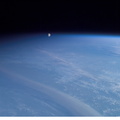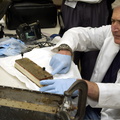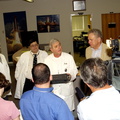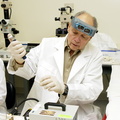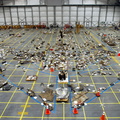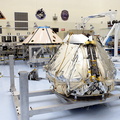
WIKIARCHIVES.SPACE
The Human Spaceflight Archive

Information
- Taken in
- Kennedy Space Center
- 作者
- NASA
- 描述
- Workers in the Payload Hazardous Servicing Facility lower the backshell over the Mars Exploration Rover 1 (MER-1). The backshell is a protective cover for the rover. NASA's twin Mars Exploration Rovers are designed to study the history of water on Mars. These robotic geologists are equipped with a robotic arm, a drilling tool, three spectrometers, and four pairs of cameras that allow them to have a human-like, 3D view of the terrain. Each rover could travel as far as 100 meters in one day to act as Mars scientists' eyes and hands, exploring an environment where humans can't yet go. MER-1 is scheduled to launch June 25 as MER-B aboard a Delta II rocket from Cape Canaveral Air Force Station.
- 建立在
- 星期六 10 五月 2003
- Source link
- https://science.ksc.nasa.gov/gallery/photos/2003/
- 點閱次數
- 24
- 評級分數
- 沒有評級
- 評級這張相片
- License
- CC BY-NC-ND
- Modified by WikiArchives
- No (original)
- 下載
- 0
建基於 Piwigo


